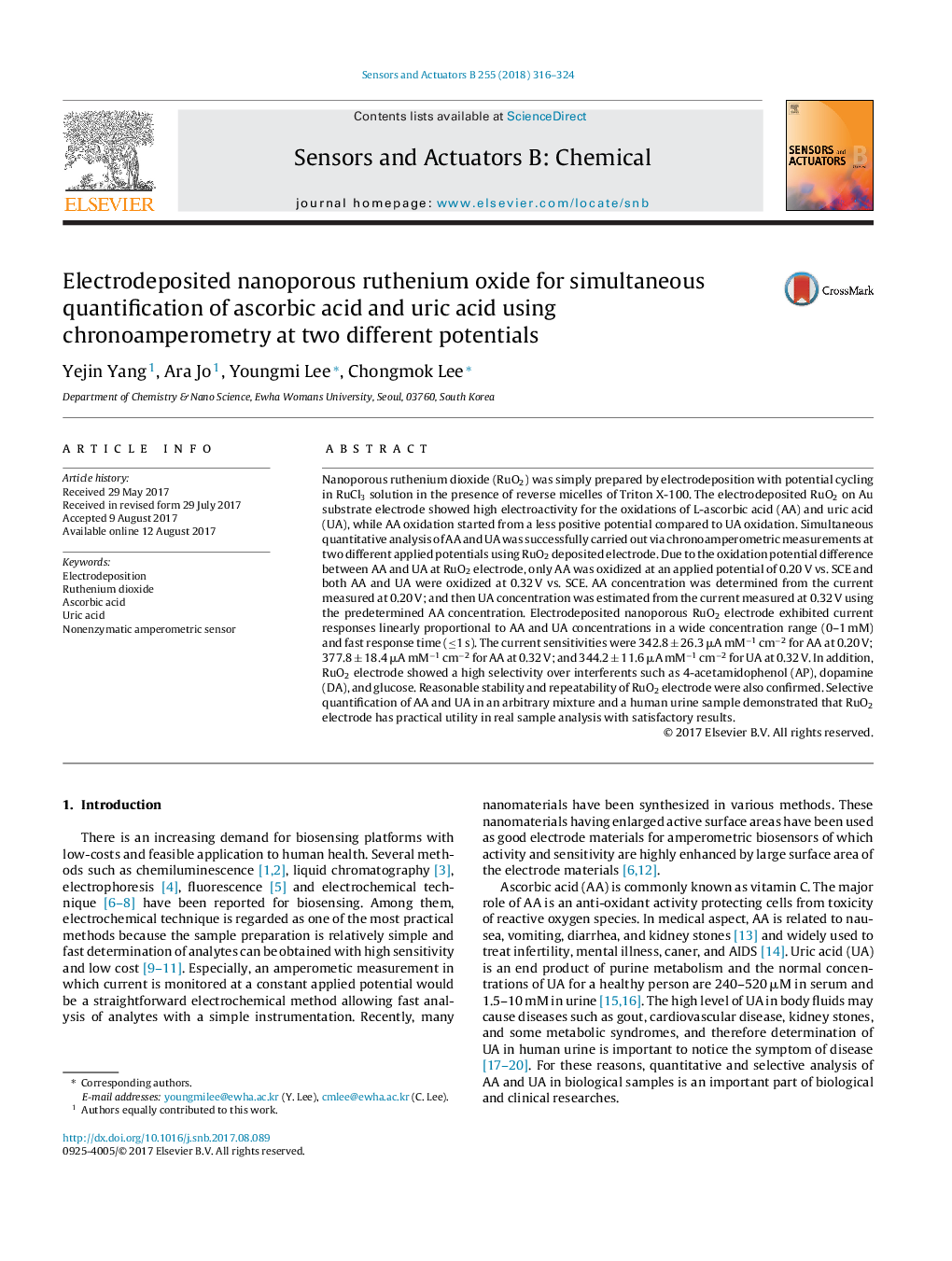| کد مقاله | کد نشریه | سال انتشار | مقاله انگلیسی | نسخه تمام متن |
|---|---|---|---|---|
| 5008622 | 1462036 | 2018 | 9 صفحه PDF | دانلود رایگان |
- We electrodeposited nanoporous ruthenium dioxide in the presence of reverse micelles of Triton X-100.
- Deposited RuO2 showed simultaneous amperometric quantification of ascorbic acid and uric acid at two different potentials.
- Deposited RuO2 showed high sensitivities for ascorbic acid and uric acid with wide concentration range (0-1Â mM) and fast response time (<1Â s).
- High selectivity over interferents such as 4-acetamidophenol, dopamine, and glucose.
- Successful simultaneous analysis of AA and UA in an arbitrary mixture and a human urine sample.
Nanoporous ruthenium dioxide (RuO2) was simply prepared by electrodeposition with potential cycling in RuCl3 solution in the presence of reverse micelles of Triton X-100. The electrodeposited RuO2 on Au substrate electrode showed high electroactivity for the oxidations of L-ascorbic acid (AA) and uric acid (UA), while AA oxidation started from a less positive potential compared to UA oxidation. Simultaneous quantitative analysis of AA and UA was successfully carried out via chronoamperometric measurements at two different applied potentials using RuO2 deposited electrode. Due to the oxidation potential difference between AA and UA at RuO2 electrode, only AA was oxidized at an applied potential of 0.20 V vs. SCE and both AA and UA were oxidized at 0.32 V vs. SCE. AA concentration was determined from the current measured at 0.20 V; and then UA concentration was estimated from the current measured at 0.32 V using the predetermined AA concentration. Electrodeposited nanoporous RuO2 electrode exhibited current responses linearly proportional to AA and UA concentrations in a wide concentration range (0-1 mM) and fast response time (â¤1 s). The current sensitivities were 342.8 ± 26.3 μA mMâ1 cmâ2 for AA at 0.20 V; 377.8 ± 18.4 μA mMâ1 cmâ2 for AA at 0.32 V; and 344.2 ± 11.6 μA mMâ1 cmâ2 for UA at 0.32 V. In addition, RuO2 electrode showed a high selectivity over interferents such as 4-acetamidophenol (AP), dopamine (DA), and glucose. Reasonable stability and repeatability of RuO2 electrode were also confirmed. Selective quantification of AA and UA in an arbitrary mixture and a human urine sample demonstrated that RuO2 electrode has practical utility in real sample analysis with satisfactory results.
180
Journal: Sensors and Actuators B: Chemical - Volume 255, Part 1, February 2018, Pages 316-324
